Does your site have broken links? If so, do you know how many?
If you’re not having much luck with increasing your ranking on search engine results pages or SERPs and you think you’ve tried everything. Think again.
Broken links could be the reason your site isn’t ranking well on Google. But, you don’t have to worry because in this post we’ll discuss different types of links, why links are important to SEO, what broken links are, and how to find and fix broken links.
The Link Family Tree
Before we can discuss broken links, we need to get to know the link family. In general, all links pass value from one webpage to another and when creating a link building strategy there are 5 types of links to keep in mind: Internal Links, External Links, Backlinks, Obtained Backlinks, and Natural Links. Let’s take a closer look at these different types of links.
1. Internal Links
An internal link is a link that takes users from one page to another within the same website. If you’re writing a post about blogger outreach and, within that article, you add a link to your blogger outreach services, that link would be an internal link.
Internal links are a great way to pass along link value or ‘link juice.’ The value of a link is a measure of how much traffic is passed from page A to page B as a result of intentional linking. Let’s go back to our blogger outreach example.
You can measure the value of the link in the example blogger outreach post by how much traffic was brought to the blogger outreach services page from that internal link.
2. External Links
Link value can be passed along external links as well. An external link is a link that takes visitors from one website to another website. For example, if a website creates a product review blog post and adds links to each product within the post, those links are external links.
External links are often used to reference source material or promote sponsored content. Not all external links are high-value. The high-value external links are generally called backlinks and are an important part of any external link-building strategy.
3. Backlinks
Backlinks drive traffic from a publisher site to your website. Building backlinks with quality publisher sites is proven to increase domain authority which can improve your ranking on Search Engine Results Pages or SERPs.
4. Obtained Backlinks
You can obtain backlinks by performing blogger outreach and building relationships with publishers that align with your brand. An obtained backlink can be a guest post, product review, an image, or any other form of linking that takes visitors from the publisher site to your site.
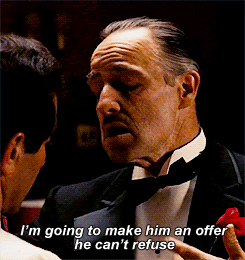
5. Natural Links
But you can also get backlinks naturally. Natural links are backlinks that are created without a direct request. If a website creates a product review blog post and none of the content is sponsored or requested, then all of the external links to the product sites are natural links. This type of link is great proof that your brand is valuable and building credibility.
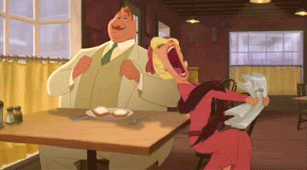
Links Can Make or Break Your SEO
Links can have a massive positive impact on your SEO strategy and the value of each link matters. Healthy links improve user experience, reduce your bounce rate, raise your ranking on SERPs, and increase your revenue.
When new and existing users are on your site, they want to have a good experience and want to gain some kind of value. If they choose to stay on your site by reading a blog post for an extended period this improves your bounce rate.
Bounce rate measures the number of visitors who enter a website and then leave after a short period.
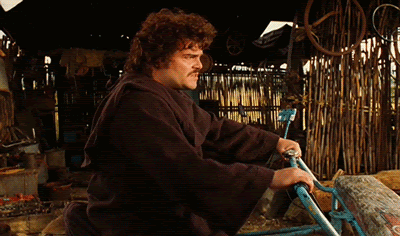
Having a high bounce rate means that when visitors land on your page, they’re not encouraged to stay on your page, which has a negative effect on your SERPs ranking.
Webpage ranking on SERPs is determined by several different factors and one of those factors is domain authority. Having high authority on a subject or topic is a good thing. You can build authority through posting consistently within your niche and through building backlinks.
Posting consistently shows search engine bots that your website has a wealth of valuable content. Building backlinks shows bots that other sites think your site is valuable. But if the links within your content are broken or if your backlinks are broken, you have a problem that could cost you a lot in the long run if the broken links aren’t addressed.
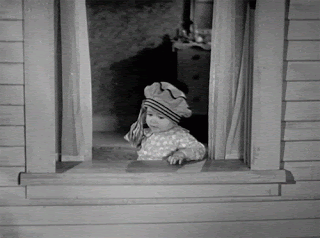
So, What’s a Broken Link?
A broken link is a link that takes users to a page that is empty or does not exist. Broken links diminish the user experience and should be fixed as soon as possible
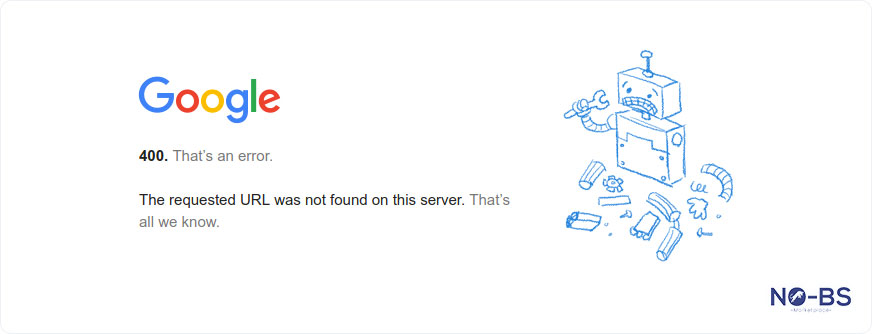
There are many different causes for broken links like deleted content, moved pages, unauthorized access, and more. Identifying the cause for a broken link is the first step toward fixing it. A broken link left unaddressed can affect user experience, bounce rate, and search engine ranking.
Have you ever been on a webpage and just felt like doing this:
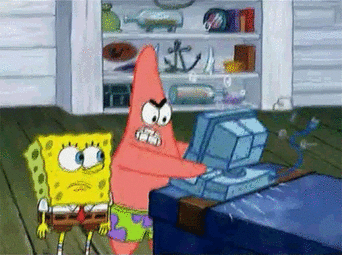
You probably had a poor user experience. User experience describes the journey for website visitors and is measured through different factors like ease of use, page load time, and many more. One important part of the user experience is linking. Links are a way for users to either explore different areas of your site or to learn more about a particular topic through referenced content.
This means that when users click on a link, they have expectations. And when a link is broken, the user’s search flow is disrupted because they are not able to easily find what they need. Broken links can cause users to leave your website in search of another source.
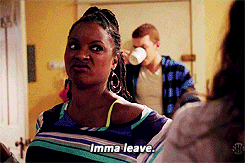
Bounce Rate
Bounce rate measures how long a user stays on a webpage before bouncing to another. A high bounce rate means a lot of people land on your page and choose to leave almost immediately. A low bounce rate means more people land on your page and tend to stay. You can see your bounce rate on Google Analytics.
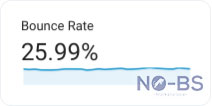
Broken links can increase bounce rates and encourage visitors to leave your page, which negatively impacts your search engine rankings. When crawling and indexing information, web crawlers view bounce rate as a signal for how valuable your content is to page visitors. If your bounce rate is high, then it appears your content has a low value which will lower your ranking on Search Engine Results Pages (SERPs).
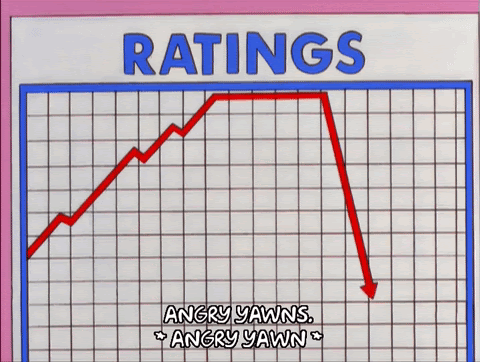
Broken Links Could Be Hurting Your Link-Building Strategy
Internal links create an outline of your site for search engine bots and they act as a vehicle to drive users from one part of your site to another. External links take page visitors off of your page. Both internal and external linking are essential to SEO, so you must have a link-building strategy in place.
No matter how robust your link-building strategy is, a broken link could tear it all down. A healthy link-building strategy is ever-evolving and seamlessly connects all parts of your site, so link value or ‘link juice’ can be passed along. Broken links damage the health of a link-building strategy because they stop the link juice from flowing.
Let me explain further. So, in the pillar cluster model for link-building, you have a pillar topic that is surrounded by clusters of subtopics that relate to the pillar. So, if the pillar topic was ‘What is Link-Building?’ the clusters may be ‘Internal Linking,’ ‘External Linking,’ ‘Blogger Outreach,’ and ‘Guest Posting.’

Learn more about the pillar cluster model in our themed link building guide.
When you create content within each cluster, you’re increasing your authority on that topic. When you create a pillar page with links to all of the clustered content, this shows search engine bots an outline of all the valuable content on your site. However, if some of the links are broken, the user experience is damaged, the bounce rate goes up, and all your SEO efforts are quickly diminished.
The same goes for external links. When you create a guest post on a reputable publisher site, the goal is to pass the link value onto your site. If the link in the guest post is broken for some reason, the potential link value is diminished.
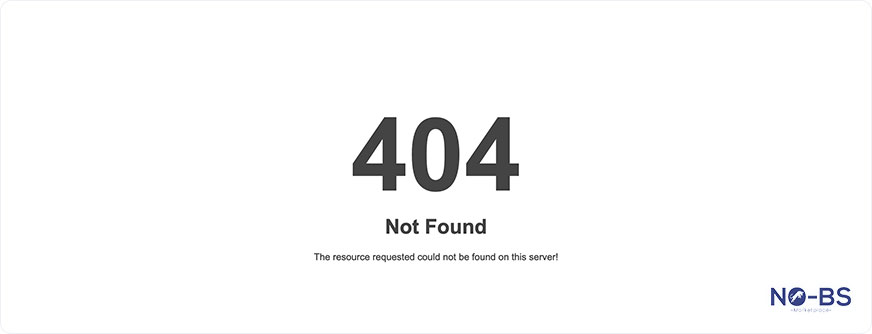
Users who may have been curious about your brand or business when they clicked on the link will become discouraged if they are met with a 404 error instead of the information they were looking for. Website visitors will also be disappointed if they are guided to click on a link that takes them to a page that is unrelated to the content or full of spam & ads.
A Misleading Links is Basically a Broken Link
When creating contextual links, make sure the curtain matches the drapes. What I mean is, make sure your anchor text accurately represents the site you are linking to. In the image below you can see that we link our guest posting services page within a blog post using the words ‘guest post.’ This is an example of a link that is not misleading.
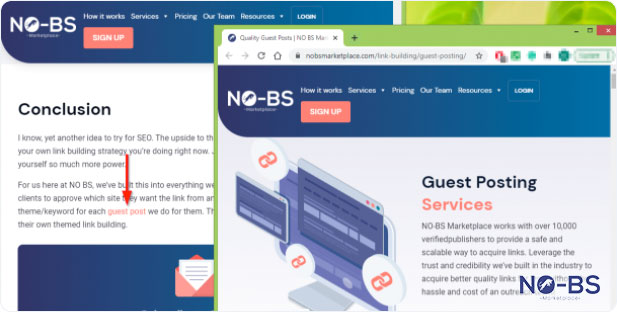
Here’s another example. If your sentence looks like this:
Internal linking can be easy if you follow these simple steps.
In this example the words ‘these simple steps’ have been linked. If the link takes users to a page on your site titled ‘8 Simple Steps for Successful Internal Linking,’ then the sentence has been linked correctly.
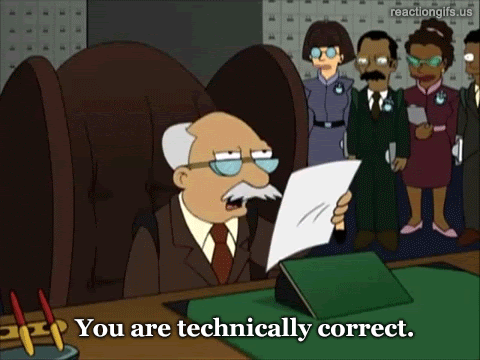
If the link takes users to a page filled with ads and spam that’s titled ‘Laugh Until You Cry Cat Videos,’ then the sentence has not been linked correctly. In this instance, the link is as damaging as a broken link because the anchor text is misleading, the user’s experience has been diminished, and you could face a penalty from search engines.
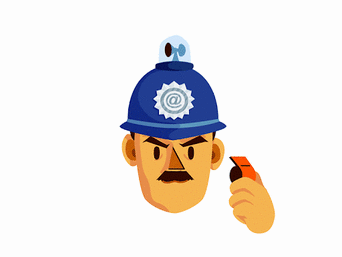
Find Them and Fix Them
The first step to fixing broken links is finding them. You can’t fix a broken link you don’t know about. That’s why we created a free Broken Link Checker that anyone can use. Simply type in your web address and within seconds any broken links found will be listed for you.
Once you’ve identified your broken links, determine the cause. Here are some reasons your web pages could be displaying a broken link error:
- Links to a third-party page that have been changed or removed.
- Links to content like PDFs, videos, and pictures that have been moved or deleted.
- Changing the name of a webpage without updating your existing links.
After finding the cause, it’s time to fix the broken link. Depending on the type of broken link, there may be several solutions, but here are a few.
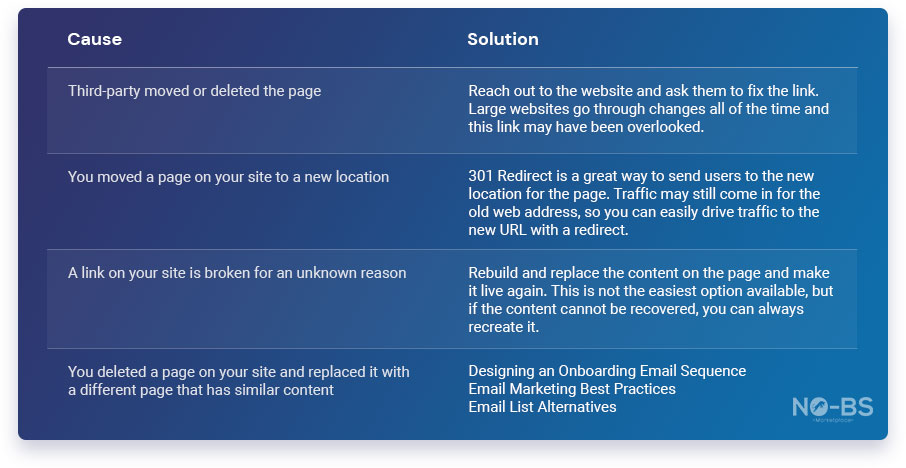
Broken Links in the Link Family Tree
All different types of links pass along value in different ways, but broken links cut off the flow of value and diminish the user experience.
It’s important to audit your website regularly to check on the health of your links. Use our free Broken Link Checker when you need to audit your site. If you need more robust SEO support, check out our white label SEO.
